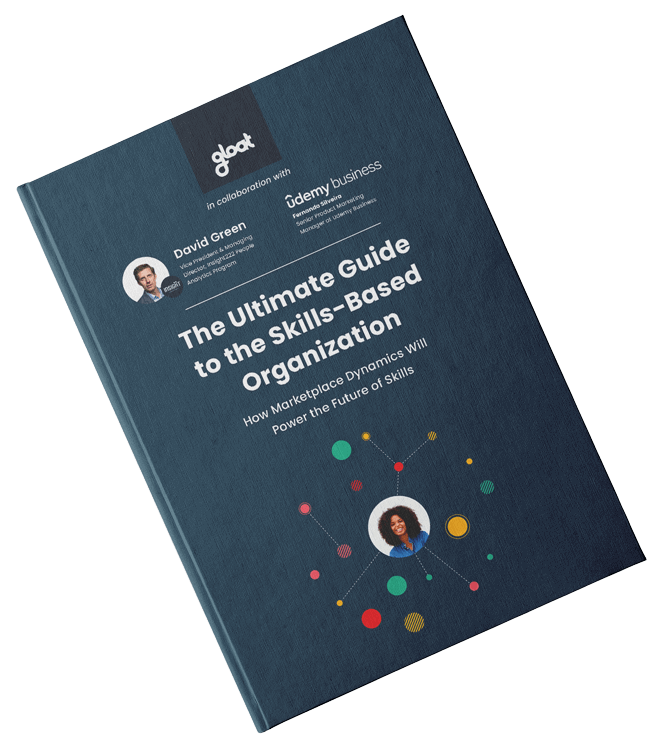What is a skills profile and what is it used for?
Why skills visibility is a prerequisite for success in the new world of work

All signs suggest that skills-based strategies are quickly becoming the modus operandi for the new world of work. 98% of executives say they plan on embracing these approaches and nine in ten businesses are already experimenting with them.
Although many executives recognize the value that skills-based strategies have to offer, there’s still a lot of uncertainty about what it takes to successfully transition from a traditional, jobs-based approach to one that puts skills at the center of every initiative.
Ultimately, leaders need complete visibility into their workforce’s capabilities to successfully navigate their skills transformations. Since employees have expertise that falls outside of their job’s domain and they’re constantly learning, many executives lack a comprehensive picture of their people’s capabilities. Rather than letting knowledge go untapped, leaders can harness skills profiles to gain a comprehensive understanding of the capabilities their employees bring to the table that evolves as their expertise expands.
What is a skills profile?
A skills profile is a singular view that captures all of an individual’s skills, abilities, and experiences. They might include a summary of an individual’s work experience and certifications, as well as technical skills and any other relevant information that highlights their expertise. The purpose of a skills profile is to provide a comprehensive overview of an individual’s qualifications, making it easier for managers to assess whether or not they are a good fit for a particular project or opportunity.
Skills profiles also enable managers to view a roster or bench of talent with critical skills, so they can see everyone with the expertise they’re looking for in one glance and make talent management decisions more efficiently. From an employee’s perspective, a skills profile gives them a benchmark so they can understand how their capabilities stack up with the competencies their employer is looking for.
Why are skills profiles important?
There are 4 different reasons why it’s in an organization’s best interest to create and leverage skills profiles:
Strategically redeploy talent
As business priorities evolve, leaders often struggle to identify employees with the skills needed to take on new projects or respond to emerging challenges. With skills profiles, managers can identify all of the employees who possess this in-demand expertise, enabling them to make strategic decisions about the talent that should be redeployed to tackle emerging priorities. They can also identify segments of the workforce that will benefit from specific upskilling initiatives based on the adjacent skills they possess.
Ensure qualified internal candidates aren’t overlooked
All too often, networking and external factors sway career development decisions in one candidate’s favor—even if there’s someone else in the organization whose skills are a better match for a given opportunity. To prevent qualified internal candidates from getting overlooked, leaders can leverage skills profiles to understand which employees have the in-demand capabilities they need to get key projects across the finish line.
Encourage employees to expand their skills
When employees get a full view into their skills, it allows them to also understand what capabilities they should work on developing next. Since skills profiles serve as a benchmark, employees can compare the knowledge they possess with the expertise their employer is looking for and identify the skills they should build to bridge any gaps.
Empower managers to look outside of their direct teams
Many managers have a tendency to tap the same few all-star employees for every high-priority project. Rather than over-relying on these employees, skills profiles surface recommendations for colleagues who possess all the same skills—in turn encouraging managers to work with different team members, which will break down silos and fuel more effective cross-functional collaboration.
What are the challenges associated with creating skills profiles?
While there are many benefits associated with creating skills profiles, there are also a few obstacles leaders should have on their radars. Namely, it can be challenging to get an accurate view of everyone’s capabilities because skills information is often siloed among various HR systems. Additionally, skills profiles can feel incomplete because they may not reflect capabilities from past jobs or outside work.
Since employees’ expertise is always growing and evolving, companies that rely on traditional HCM platforms for their skills insights will find that this information quickly becomes out of date. In contrast, leaders that harness AI-powered skills profiles can feel confident that all skills data is updated in real-time.
3 best practices for leaders who are interested in utilizing skills profiles
Leaders who are interested in harnessing skills profile to gain an in-depth understanding of their workforce’s capabilities can take the following steps to ensure they’re setting their company up for success:
#1. Shift to an internal-first mindset
While external hiring has traditionally been the default method for bridging skill gaps, leaders are increasingly embracing an internal-first approach. Rather than going through a candidate search process that it’s expensive and time-consuming, companies that use skills profiles can first see who possesses the capabilities they’re looking for internally. Since skills profiles present the full breadth of employees’ capabilities, leaders can also identify internal candidates with adjacent knowledge who can be upskilled to fill the role or opportunity they’re looking for.
#2. Empower employees to keep adding to their skill sets
Once employees see how their current skills stack up to the capabilities their employer is looking for, leaders and managers should empower them to begin bridging these gaps. Giving employees transparency into the capabilities they currently have often inspires them to hone new ones—especially if leaders create ample pathways for them to build new skills.
In addition to content-based curriculums, organizations should offer hands-on experiences that allow people to put the lessons they’re learning into practice. By harnessing a talent marketplace, companies can ensure their people are seeing recommendations for opportunities to build the skills they’re looking to develop.
#3. Encourage managers to expand their horizons
One of the main benefits that skills profiles offer is that they allow managers to compare employees side-by-side to determine who is the best fit for a given opportunity, based solely on their skills. Once they have this visibility, they will be encouraged to take a chance by collaborating with employees outside of their function or department—in turn driving better collaboration across the organization.
To learn more about what it takes to accelerate your company’s skills-based transformation, check out our guide to becoming a skills-based organization





